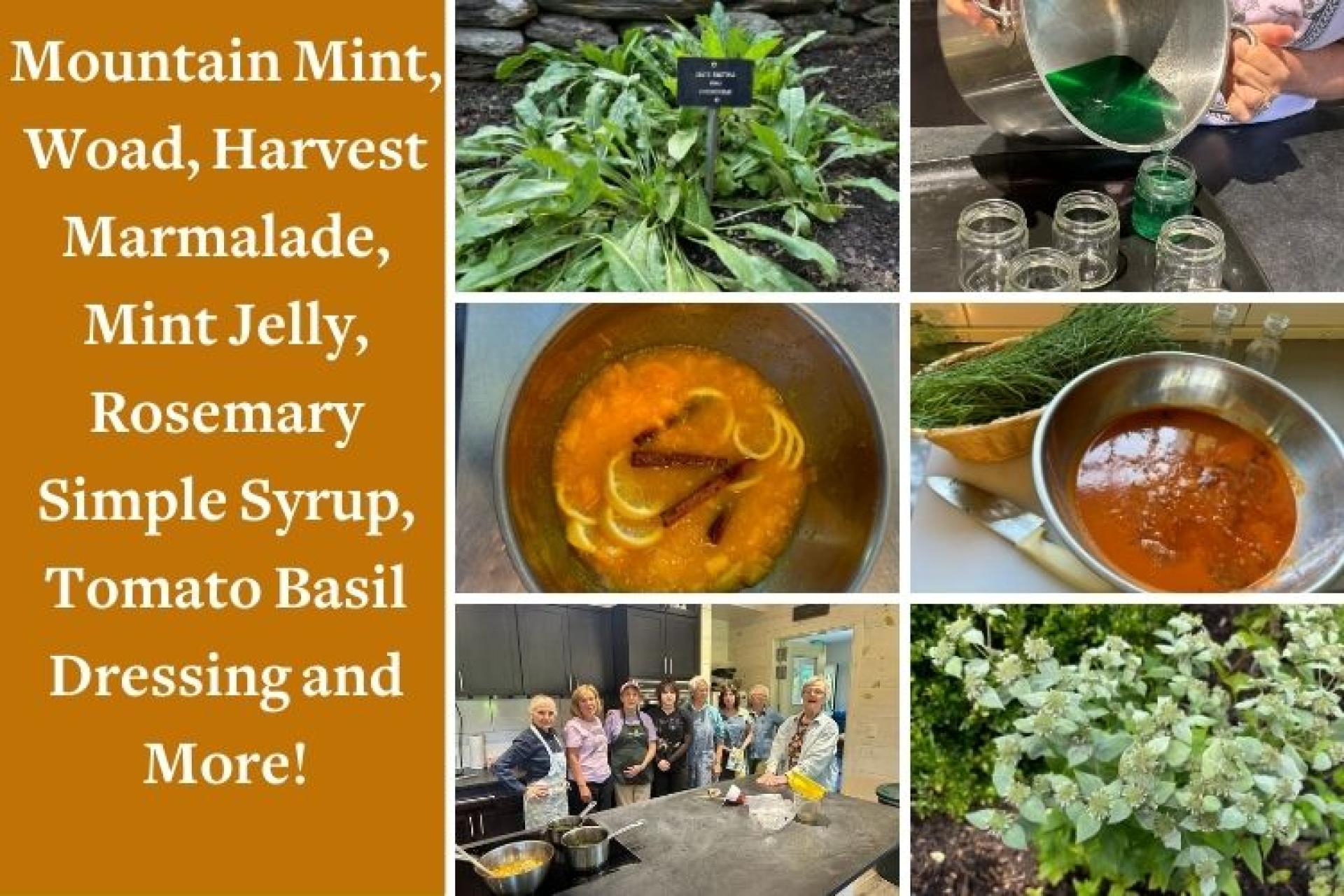You are here
What Is Happening in the BBG Herb Gardens and Kitchen (Aug. 27)?
What Is Happening in the BBG Herb Gardens and Kitchen (Aug. 27)?
by Barbara F. Smith
With the new school year just around the corner, the anticipation of a new start still resounds with me, decades after finishing formal schooling. The good news is that learning is a lifelong process — and gardening surely provides opportunities for growth and reflection.
This week, Ellen Ecker Ogden, a kitchen garden designer who writes the “Art of Growing Food” blog, reflected a bit on a “Small is Beautiful” theme, noting that “[t]he best kitchen gardens are intimate spaces that are easy to plant and give gardeners a sense of pride and pleasure…Growing food truly matters, and I want everyone to experience planting a seed, watching it grow, and taking pride in eating what comes from the earth…Love your garden and take time to observe the subtle changes…These brief moments affirm why we garden with the knowledge that the plant community gives back to us in more ways than we can imagine.”
These articles are meant to highlight the work of the BBG Herb Associates, the herb gardens we tend and products we create, and to share the delight of herb gardening with home gardeners who may be inspired by the information provided. Maybe you’ll decide to tuck in some herb plants among your perennials, or perhaps you’ll visit the BBG’s Display and Production Herb Gardens to enjoy the scores of plants under cultivation. Maybe you’ll stop by the Visitor’s Center Gift Shop to purchase a product you might not make yourself but would like to try.
In many ways, the Botanical Garden offers lessons of all kinds — classes, hands-on workshops, art gallery shows, children’s camp sessions. The Garden offers the opportunity to walk the grounds and reconnect with the outdoors through all your senses — appreciating the beauty of nature and being present in the moment. There’s always something to learn.
This week we’re highlighting two herbs in the Herb Display Garden: mountain mint and woad, plants that may be new to you.
Pycanthemum muticum (mountain mint, pictured above) is a beautiful herb, one of eighteen mint species native to eastern North America. This herbaceous perennial growing to three feet tall prefers full sun and moist conditions, typically found in grassy open places like meadows or fields. Its name is derived from the Greek words that translate to “dense flowers.” The plant has dark green leaves with pink flowers and silvery bracts, which give the plant the appearance of “being dusted by a white powdery snow,” very attractive. It spreads vigorously by rhizomes. Mountain mint is a favorite for butterflies and foraging bees, which produce distinctively scented honey from this variety of mint. This underutilized herb would be at home in wildflower or meadow gardens, or in borders. (Rodale’s Encyclopedia of Herbs).
Isatis tinctoria (woad, pictured above) has been cultivated as an agricultural crop at least since Roman times. You may see it in the dye bed of the Herb Display Garden, although its flowering season has passed. Early accounts report that Caesar encountered war-like native Celt Britons painted blue-black with the pigment derived from woad, when he arrived. This yellow-flowered plant was the source of deep blue coloring for fabrics used throughout Europe since the Middle Ages (although it became less popular when England allowed the importing of indigo in the late 17th century). In addition to providing coloring for dying fabrics, woad had a medicinal use — to stop bleeding. That fact is frequently mentioned in connection with its use by Britons as a pre-battle ointment that was ‘startlingly’ blue and was perhaps meant to protect from swords and spears rather than as an ornament. (See, The New American Herbal, by Stephen Orr.)
In the Kitchen, the Herb Associates Kitchen Crew prepared the popular Harvest Marmalade, featuring yellow tomatoes, lemon, candied ginger and cinnamon sticks. Customer demand had the Crew make another perennial favorite, Mint Jelly, as the supply had been sold. Rosemary Simple Syrup (which someone suggested worked well in Moscow Mule cocktails) and Mint Simple Syrup were prepared. Several visitors to the building stopped by to inquire “what smells so good?” as the fragrances of chopped rosemary, mint, and other ingredients wafted on the air. Another batch of Tomato Basil Dressing took advantage of the bumper crop of basil, and Herb Salt, a dried herb product, was also prepared.
To round out the session, a bride who had requested a special batch of herb jellies be prepared as favors at her wedding reception stopped by to thank the team who worked hard to fill the request (pictured above). Whether there’s a special occasion in your life, a corporate retreat, birthdays, or holidays, the Herb Associates’ wide variety of products might be just the right selection to fit your needs. Stop by the Visitor’s Center Gift Shop to check out your options.
Thank you for your interest in all things herbal at the Berkshire Botanical Garden!
The Berkshire Botanical Garden’s Herb Associates began in 1957 and have been making and selling products for the benefit of BBG ever since. At BBG, the Herb Associates oversee a display garden and production garden, both located near the Center House. Members/volunteers meet every Tuesday morning during the late spring through mid-autumn each year, coinciding when the gardens themselves are open to the public. Members plant, weed and tend the gardens, as well as harvest and process the variety of herbs.
Help Our Garden Grow!
Your donation helps us to educate and inspire visitors of all ages on the art and science of gardening and the preservation of our environment.
All donations are 100 percent tax deductible.


